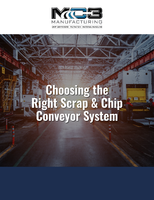SMT Attach Method helps increase yields, reliability.
Press Release Summary:
Optimized for fatigue strength, Solder Charge Surface Mount Technology (SMT) attach method exhibits sloping solder filet that provides durable attach method for its sheer strength and pull-force. Use results in increased PCB retention strength, precise formation of stamping die, and mechanical designs that allow for visual inspections post processing. Flexible solder mass compensates for board warping, and solution is available in tin-lead or lead-free designs.
Original Press Release:
New SMT Attach Method Enhances Yields and Lowers Applied Costs for OEMs
Molex Solder Charge Technology Offers Multiple Benefits over Standard BGA Attachments
LISLE, Ill. - July 9, 2008 - Molex Incorporated (NASDAQ: MOLX and MOLXA) has developed a new Surface Mount Technology (SMT) attach method that features excellent fatigue strength and lower applied costs compared to traditional SMT mounting methods. Molex's Solder Charge technology has been quickly adopted by major OEMs and contract manufactures (CMs) to enhance yields and increase reliability over typical Ball Grid Array (BGA) attach methods.
To download a video of the solder charge process, visit:
http://www.businesswire.com/portal/site/home/news/sections/?ndmViewId=news_view&newsLang=en&newsId=20080709006172
"Molex Solder Charge exhibits a sloping solder filet that provides a durable attach method for its sheer strength and pull-force, making it a superior candidate over BGA mounting styles," said Adam Stanczak, product manager, Molex Incorporated. "In the connector assembly process, stamping a Solder Charge is less expensive and more precise than melting a solder ball onto a metal lead. Process engineers also find post-process inspection to be immensely more precise compared to most BGA interconnect solutions."
Incorporating Solder Charge technology into the design process offers several benefits over standard BGA attachments, including:
-A mechanical design that allows for visual inspections post processing, limiting reliance on Dage x-ray screening;
-Increased PCB retention strength - roughly three times as strong as typical BGAs - that reduces stress on solder joints, increases compliancy and lowers applied costs;
-Reduced cycle times and fewer rework and secondary processing steps that promote increased output;
-Precise formation of stamping die, which offers enhanced precision in the solder charge formation and adhesion process;
-Flexible solder mass that compensates for board warping, and;
-Availability in tin-lead or lead-free designs, without increased costs for either option.
Ideal for high-speed circuitry, Molex Solder Charge technology permits the transmission line to directly reach the PCB, minimally disrupting the design and maintaining the system's electrical properties. Solder Charge comfortably adjusts for inconsistency in the flatness of the PCB, facilitating consistent soldering processes and counteracting problems that may occur at the solder interface from other design variables. As a result, lower-cost board designs can be employed without sacrificing a product's integrity.
Offered in Molex's HDMezz(TM) and SEARAY* connector systems, as well as new connector designs currently in development, Solder Charge technology can be leveraged in a number of products that currently use BGA mounting methods. For information about incorporating this attachment style into an assembly design, visit: www.molex.com/product/soldercharge.html.
About Molex Incorporated
Molex Incorporated is a 70-year-old global manufacturer of electronic, electrical and fiber optic interconnection systems. Based in Lisle, Illinois, USA, the company operates 59 manufacturing facilities in 19 countries. The Molex website is www.molex.com.




